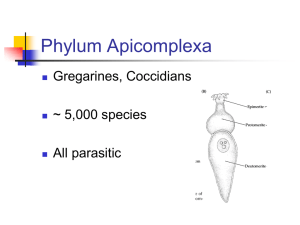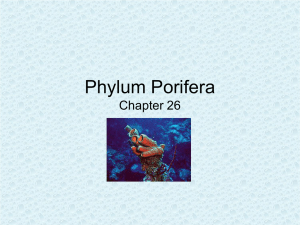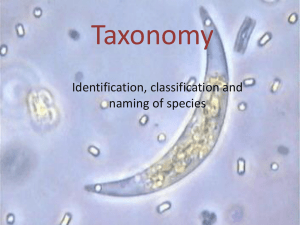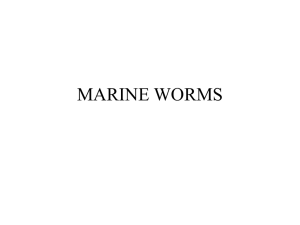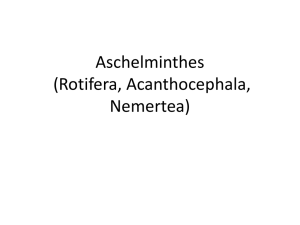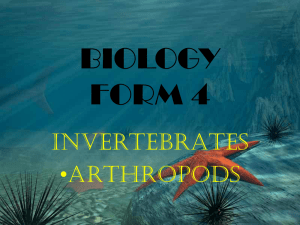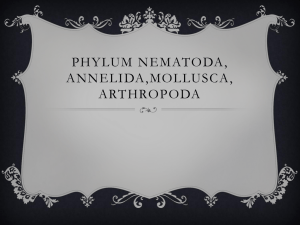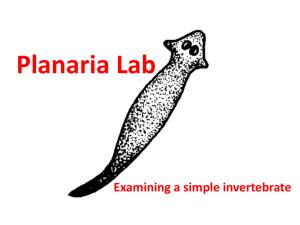11/16
advertisement
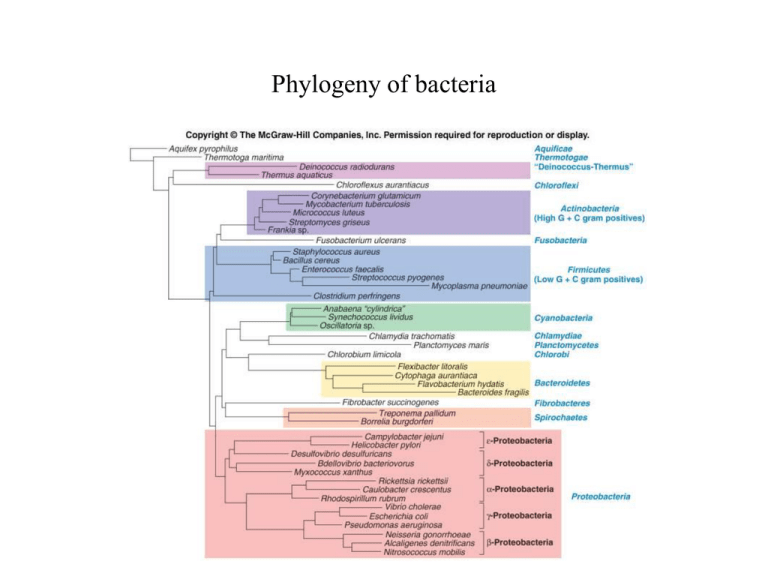
Phylogeny of bacteria Nonproteobacteria gram-negative bacteria Many gram-negative bacteria belong to diverse phyla which differ from the proteobacteria Some belong to the oldest branches of bacteria while others have arisen more recently Aquificae and Thermotogae The two oldest branches of bacteria Both are hyperthermophilic Deinococcus-Thermus Species belonging to the genus Deinococcus are best studied Very resistant to radiation and desiccation T. aquaticus Taq polymerase Deinococcus Often associate in pairs and tetrads Stain gram + although cell wall is similar to gram cells Photosynthetic nonproteobacteria Photosynthetic nonproteobacteria Phylum Chloroflexi Also contains nonphotosynthetic bacteria Are the green nonsulfur bacteria Can be isolated from neutral to alkaline hot springs Photosynthetic nonproteobacteria Phylum Chlorobi Composed of 1 class, 1 order and 1 family Are the green sulfur bacteria Use sulfur and sulfur-containing compounds as electron sources Photosynthetic nonproteobacteria Phylum Cyanobacteria Largest and most diverse group of photosynthetic bacteria Photosynthetic system resembles that of eukaryotes Employ a variety of reproductive mechanisms (e.g. binary fission, multiple fission, budding and fragmentation) Photosynthetic nonproteobacteria Phylum Cyanobacteria Vary greatly in shape and appearance Phylum Planctomycetes Spherical or oval bacteria that lack peptidoglycan Reproduce by budding In some species the nuclear body is membrane-bound Phylum Chlamydiae Originally grouped with the rickettsias (rickettsias now in -proteobacteria) Both are small obligate intracellular parasites Genus Chlamydia is the best studied Phylum Chlamydiae Three species are important human pathogens Cell walls lack peptidoglycan Osmotic stability achieved by cross-linking of outer membrane proteins with disulfide bonds Chlamydial life cycle Phylum Spirochaetes Distinguished by their structure and mechanism of motility Slender long bacteria with a helical shape Many are too thin to be seen using phase-contrast or dark-field microscopy Phylum Spirochaetes Phylum Spirochaetes Ecologically diverse Some are free-living (soil and freshwater) Others live in symbiotic relationships with other organisms (insects, mollusks and mammals) Phylum Spirochaetes Phylum Spirochaetes Some species are human pathogens e.g. Treponema pallidum (Syphilis) Borrelia burgdorferi (Lyme disease) Phylum Spirochaetes Cells are bound by flagella called endoflagella (or axial fimbrils or periplasmic flagella) Complex of flagella called axial filaments Filaments bound by a sheath Phylum Spirochaetes Motility likely due to rotation of filaments Rotation causes corkscrew-like movement of the cell Phylum Bacteroidetes Very diverse phylum Closely related to Chlorobi Anaerobic rods of various shapes Phylum Bacteroidetes Phylum Bacteroidetes Grow in the oral cavities and intestinal tracts of animals They are often beneficial to their host B. fragilis is the cause of anaerobic infections in humans
